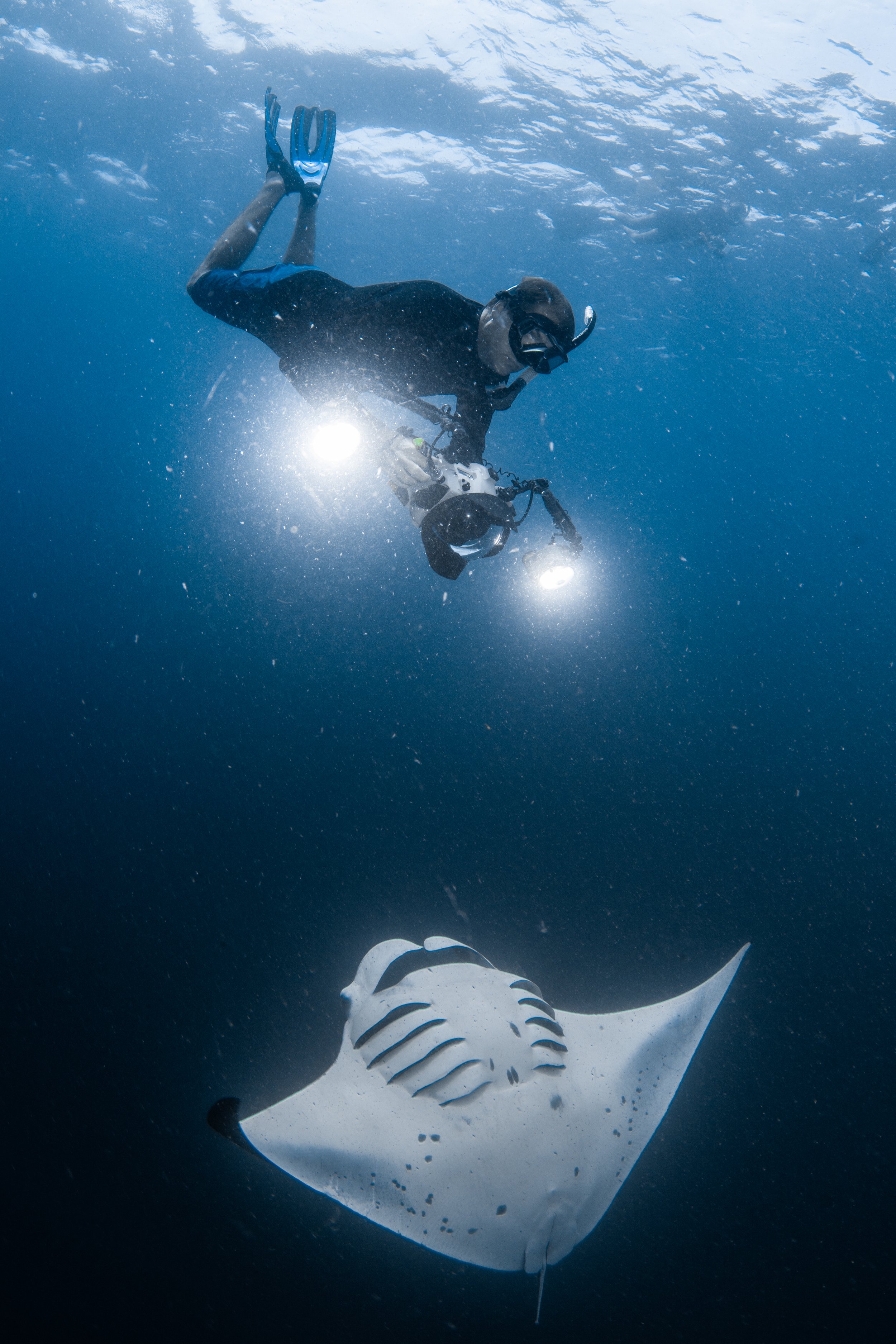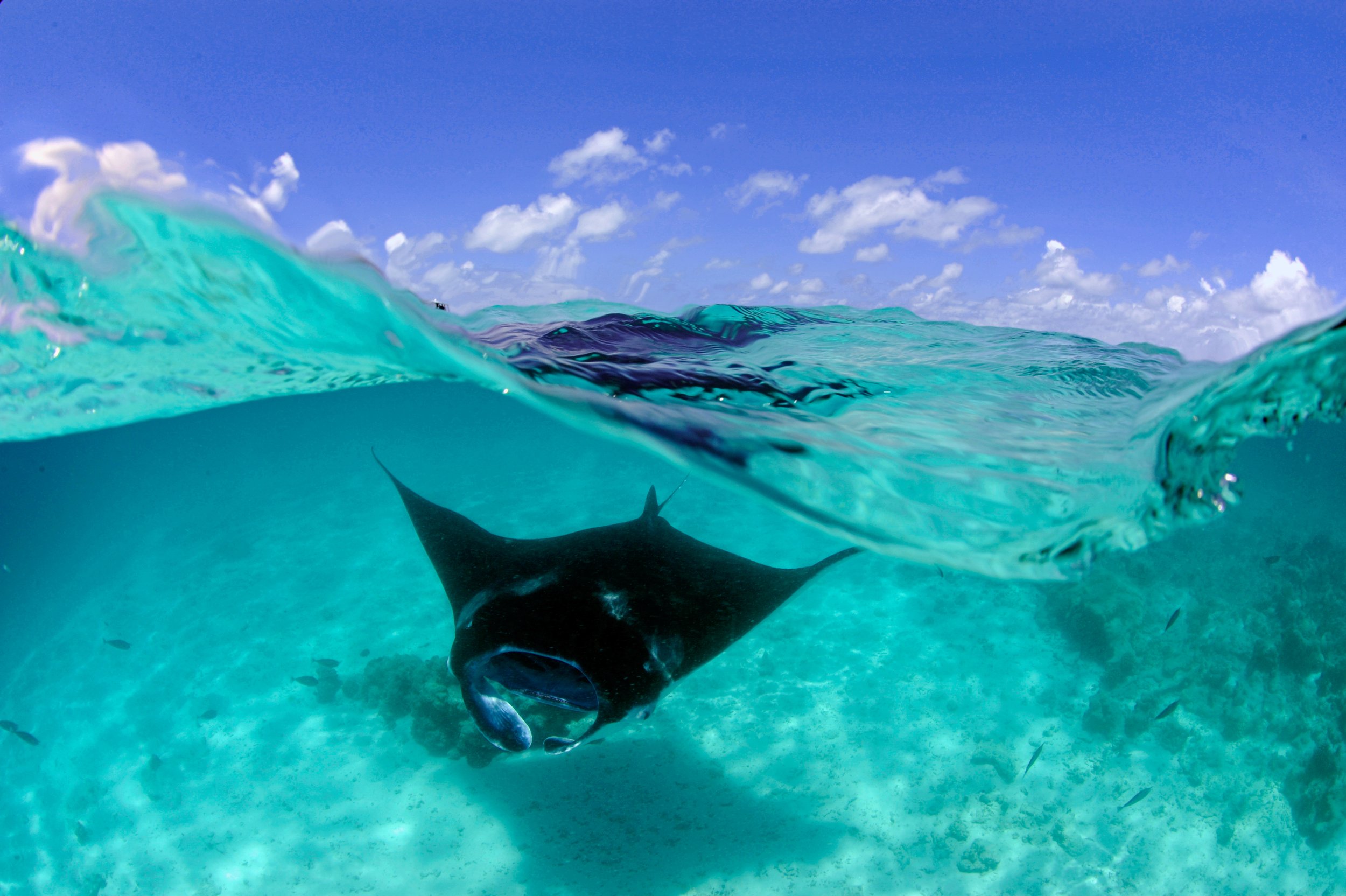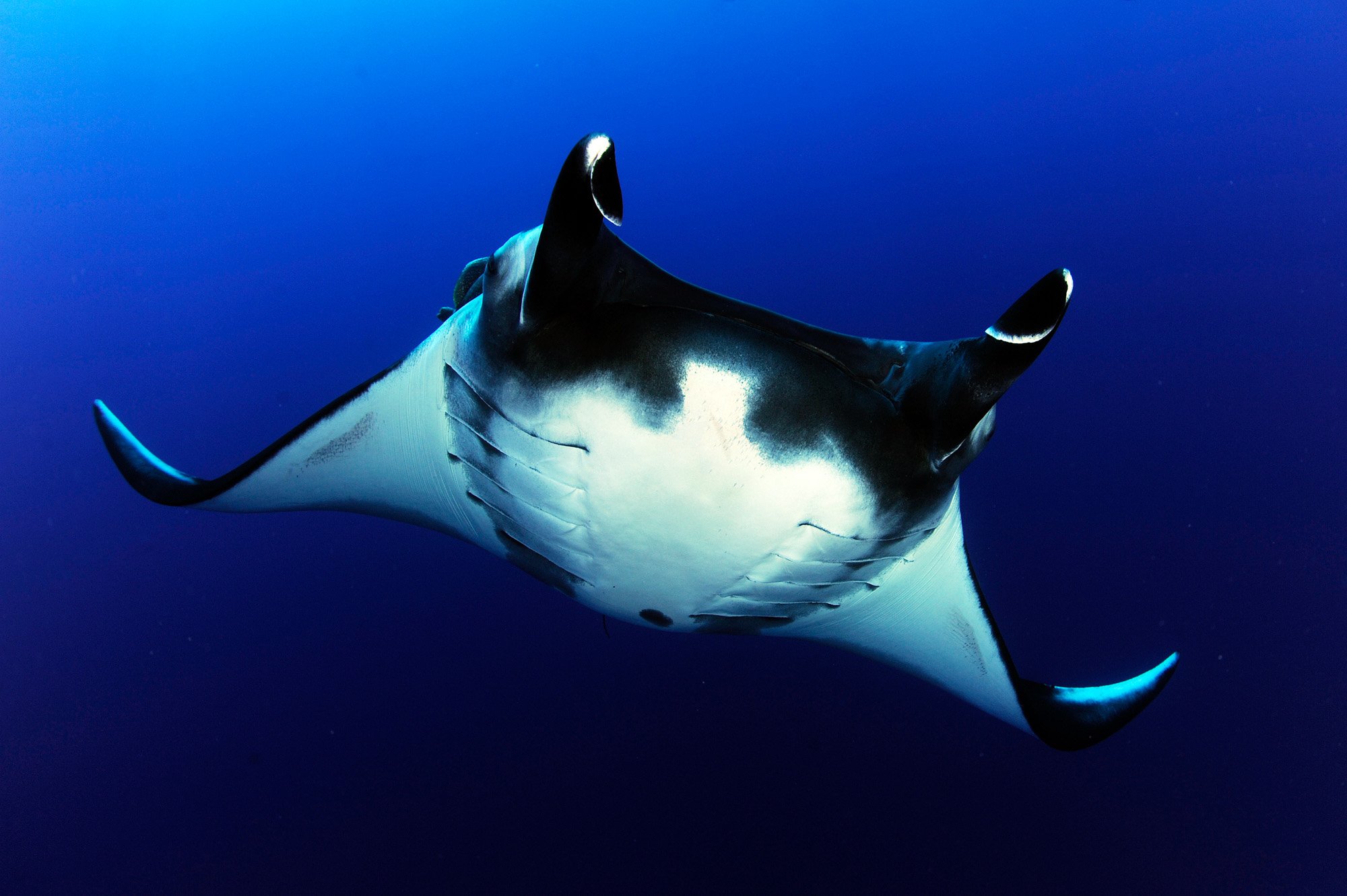Conservation and Population Ecology of Manta Rays in the Maldives
2011 - 2016
Dr. Guy Mark William Stevens
Keywords: Age and size at maturity • Longevity • Young of the year • Photo-ID • Cleaning Stations • Courtship Trains • Copulation • Reproductive Behaviour • Mate Choice • Leks • Courtship • Mate Choice • Mating Behaviour • Monsoons • Feeding Strategies • Coordination • Breaching • Group Behaviour • Communication
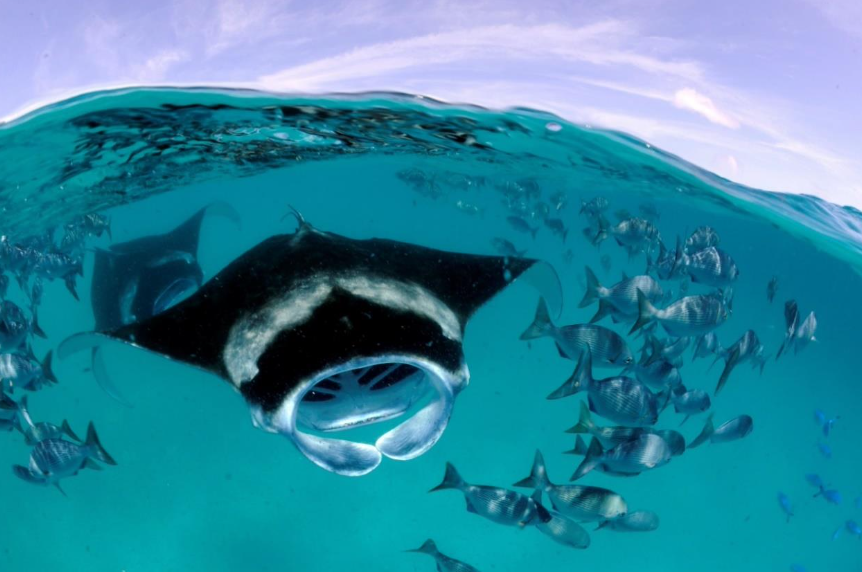
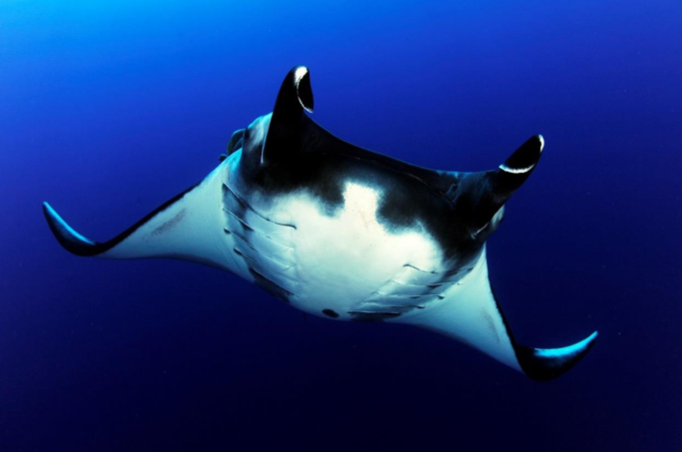
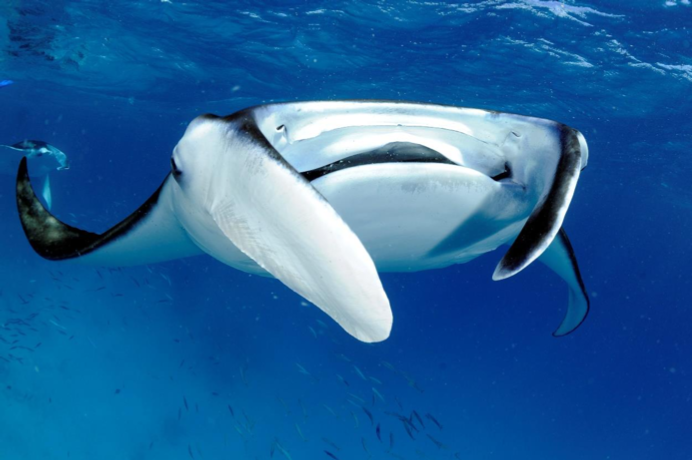

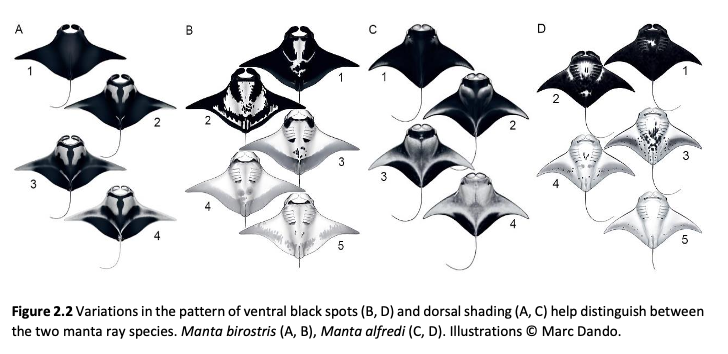
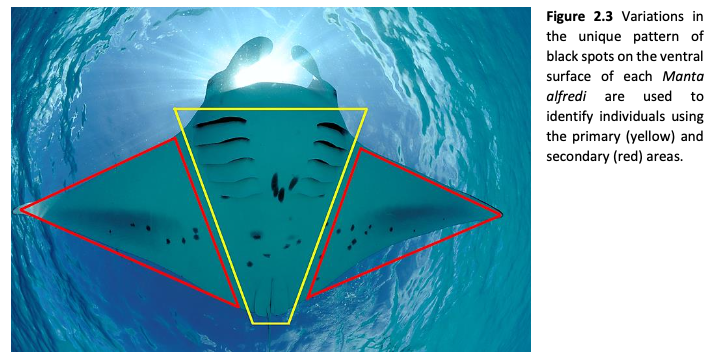
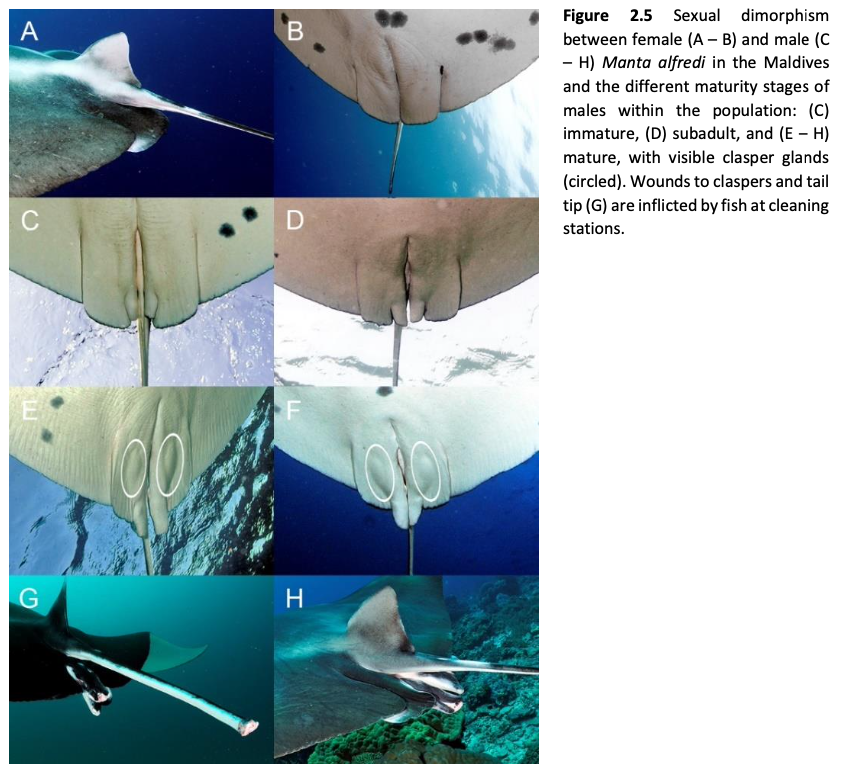
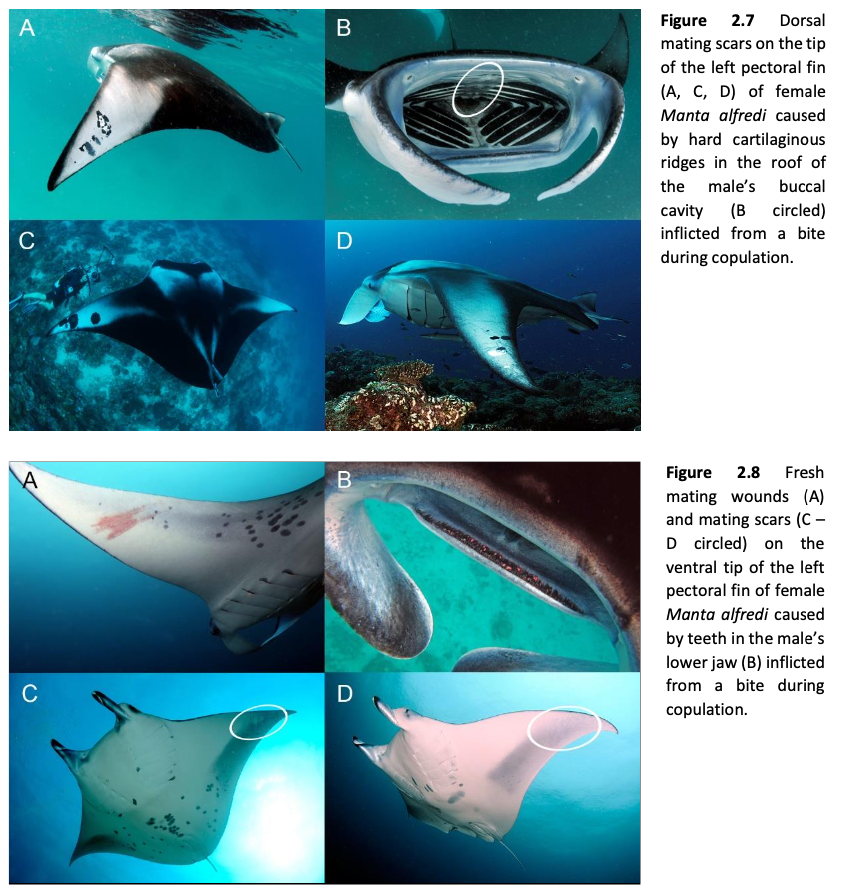
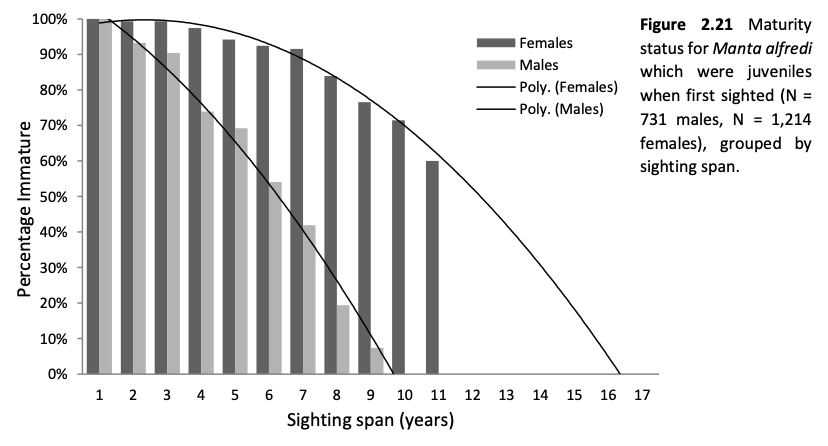
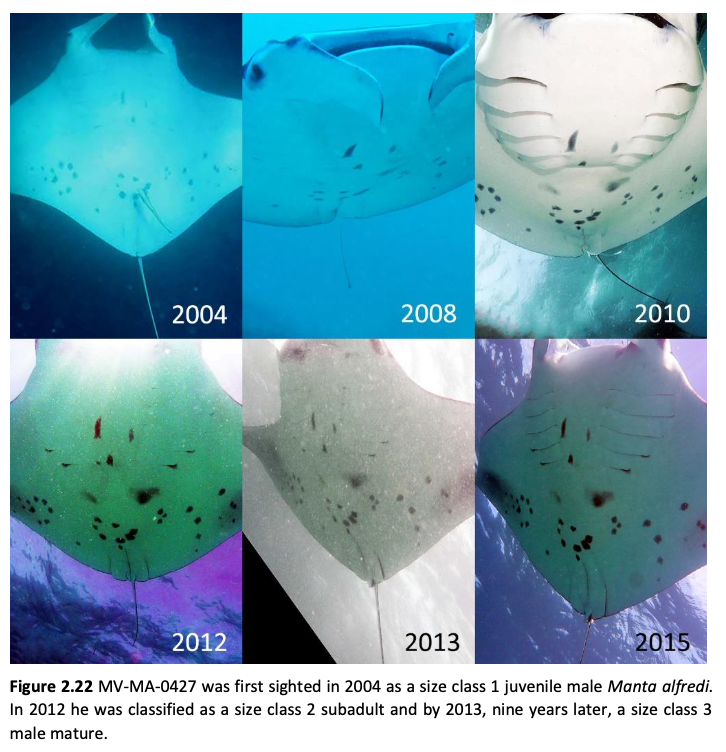
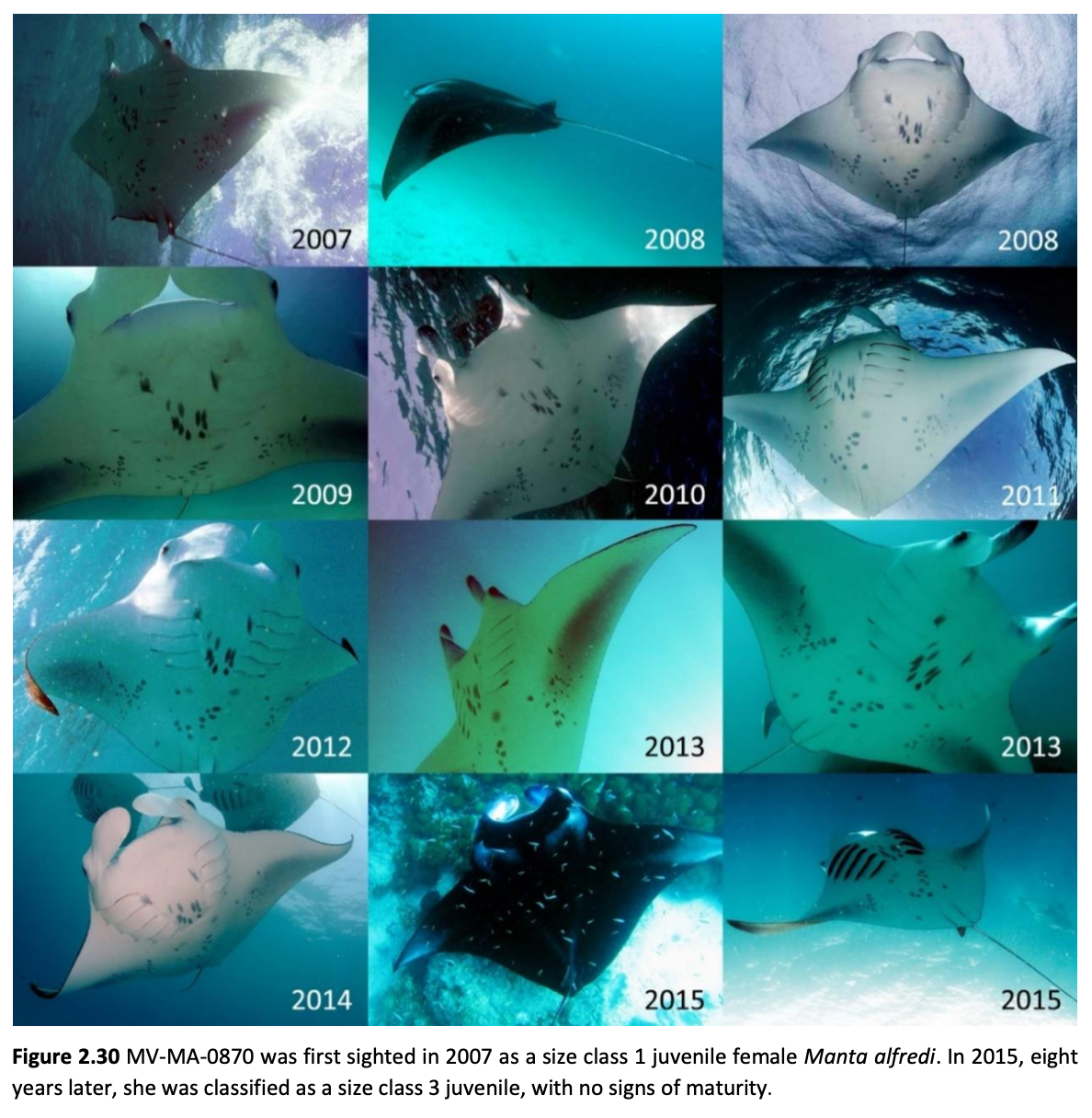
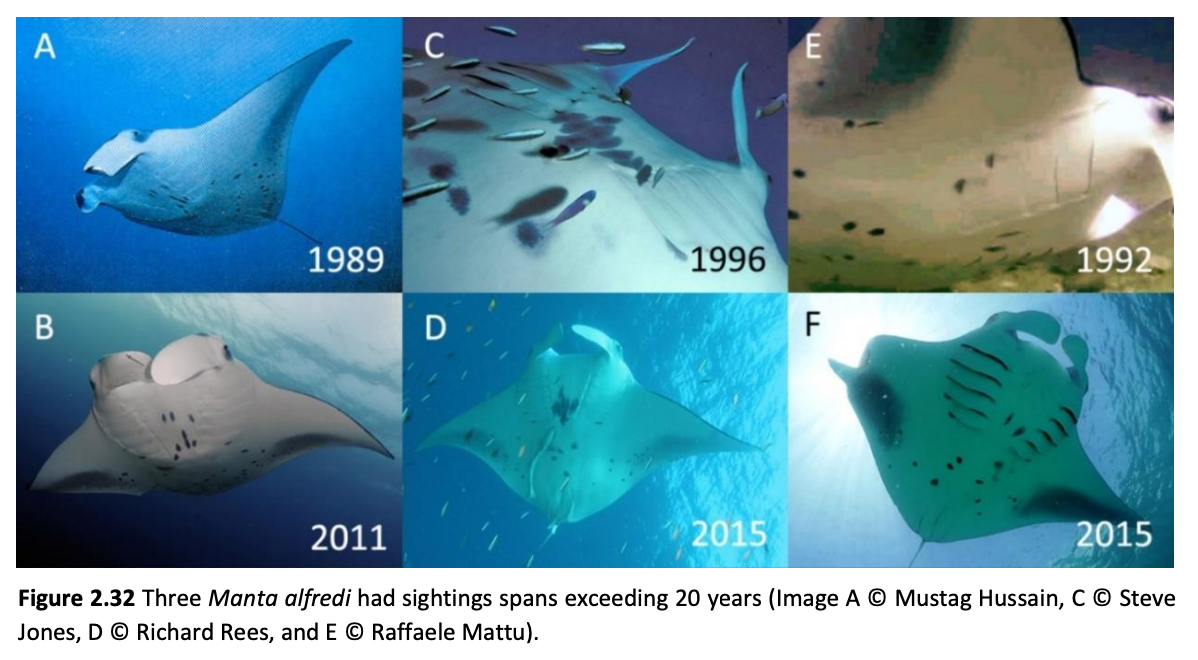
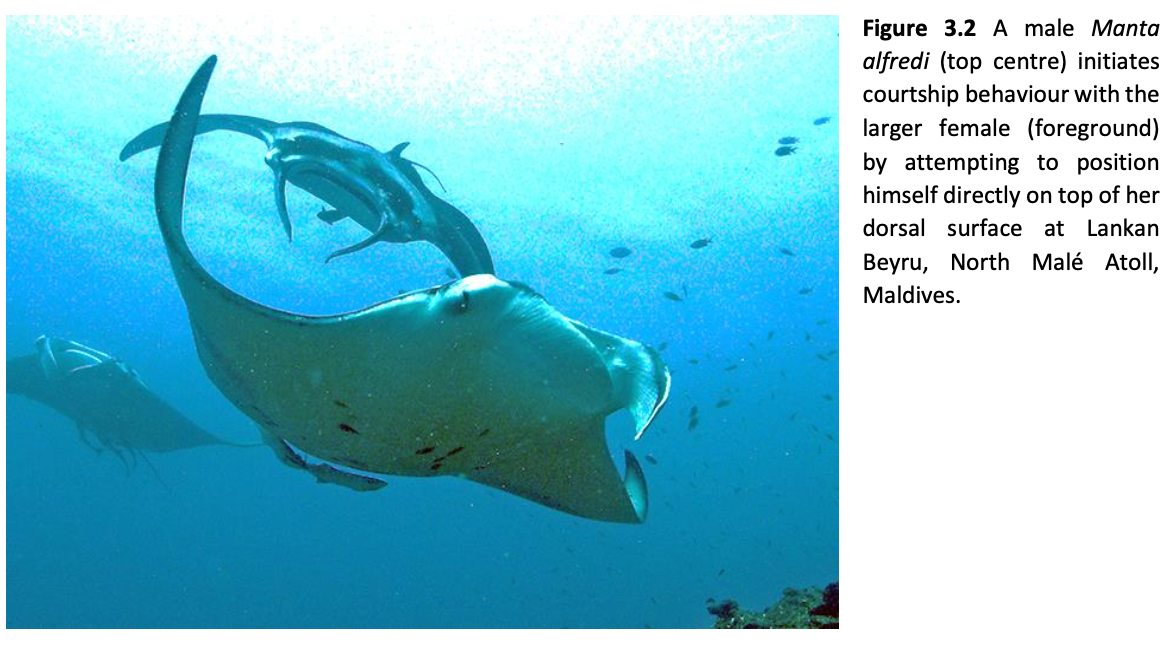

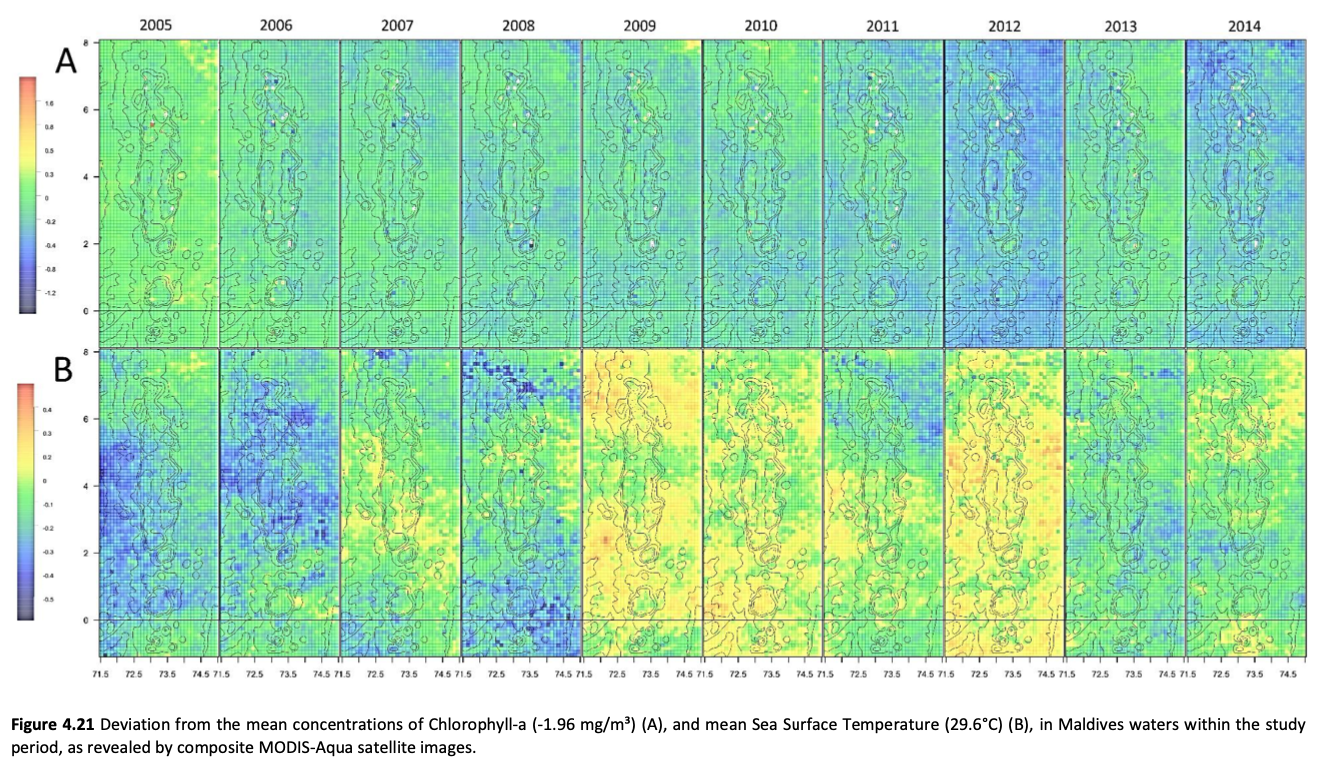
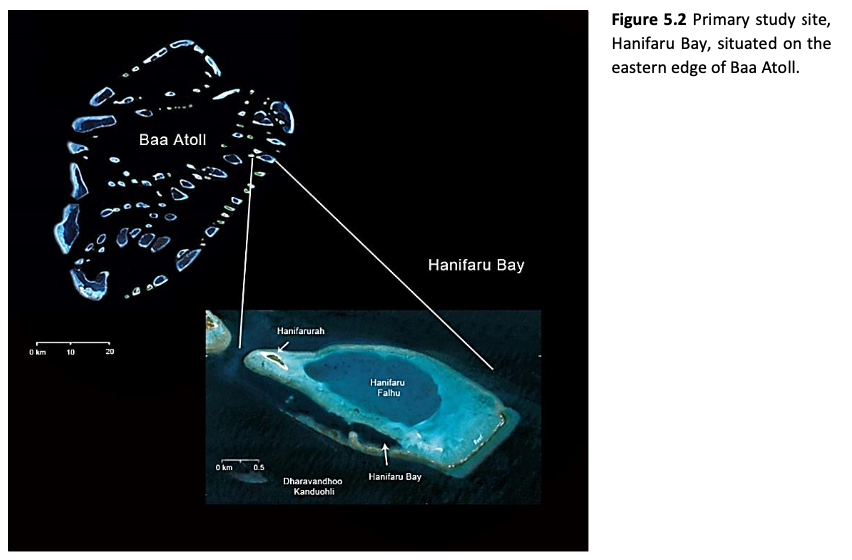
Summary: This multi-decade study focussed on an unfished population of manta rays in the Maldives using photo-ID records and behavioural observations has found that the age at maturity for reef manta rays (M. alfredi) is higher than previously thought. Females reach maturity at 15 years and males at 11, whilst fecundity was found to be very low, illustrating that the species is vulnerable to overfishing and should be protected from exploitation across its global range. The study also characterised the habitat use of M. alfredi, with frequent use of shallow protected lagoons suggesting these sites may act as nursery areas.
Abstract
“This multi-decade study on an isolated and unfished population of manta rays (Manta alfredi and M. birostris) in the Maldives used individual-based photo-ID records and behavioural observations to investigate the world’s largest known population of M. alfredi and a previously unstudied population of M. birostris. This research advances knowledge of key life history traits, reproductive strategies, population demographics and habitat use of M. alfredi, and elucidates the feeding and mating behaviour of both manta species.
M. alfredi reproductive activity was found to vary considerably among years and appeared related to variability in abundance of the manta’s planktonic food, which in turn may be linked to large-scale weather patterns such as the Indian Ocean Dipole and El Niño-Southern Oscillation. Key to helping improve conservation efforts of M. alfredi was my finding that age at maturity for both females and males, estimated at 15 and 11 years respectively, appears up to 7 – 8 years higher respectively than previously reported. As the fecundity of this species, estimated at one pup every 7.3 years, also appeared two to more than three times lower than estimates from studies with more limited data, my work now marks M. alfredi as one of the world’s least fecund vertebrates. With such low fecundity and long maturation, M. alfredi are extremely vulnerable to overfishing and therefore needs complete protection from exploitation across its entire global range. With similar life history traits assumed for the lesser known M. birostris, adopting the precautionary principle, the same highly protective approach is justified.
Through characterising habitat use of M. alfredi, it appears that their use of shallow coral reefs may be a function of behavioural thermoregulation and predator avoidance, with cleaning stations acting as focal gathering points where social behaviour is undertaken, such as courtship and mating. The frequent use of shallow protected lagoons by juvenile M. alfredi suggests these sites may act as nursery areas.
The study underscores the importance of long-term research on long-lived species with conservative life history strategies if important ecological and management questions are to be answered.”
About The Author - Dr. Guy Mark William Stevens
Guy Stevens is the Chief Executive and Founder of the Manta Trust. He has spent the last 20 years studying mobulids all over the world and is one of the foremost experts on these species. He founded the Maldives Manta Conservation Programme in 2005 and after 11 years of research, he completed his PhD on the world’s largest population of reef manta rays at the end of 2016.
His conservation efforts in the Maldives have led to the creation of several marine protected areas at key manta aggregations sites, most notably at Hanifaru Bay. Internationally, he is part of a team which has driven the conservation of mobulids forward, resulting in the listing of all manta and devil rays in the Appendices of the Convention on the Conservation of Migratory Species of Wild Animals (the Bonn Convention) and the Convention on International Trade in Endangered Species of Wild Fauna and Flora (CITES). He is the author of two books; the award-winning MANTA – The Secret Life of Devil Rays, published in 2017, and the Guide to Manta and Devil Rays of the World, published in 2018, and he has also published over 40 peer-reviewed research papers.


